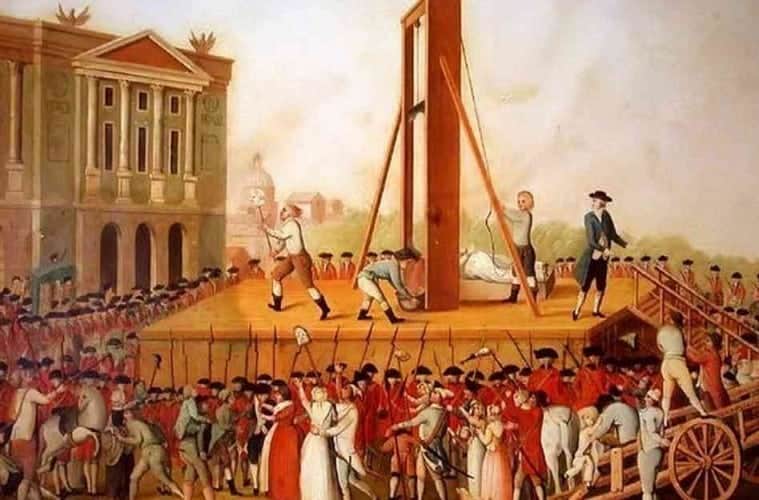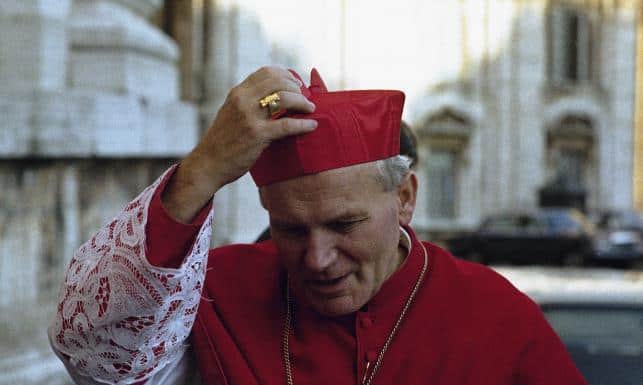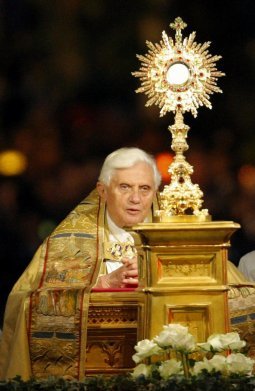I’m sure many of you caught these recent headlines:
* Social liberalism in the United States is on the rise.
* Christianity is bleeding members at an alarming rate in the United States, while those who consider themselves unaffiliated with any religion are at a record high.
* Across the Pond, in Catholic Ireland, the population just overwhelmingly approved the legalization of gay “marriage” in a referendum.
With dramatic results like these, it is natural to ask some hard questions about how we arrived here. The answers, like the issues, are not simple. In many ways, these new realities are the “full-circle effect” of ideologies that were decades, even centuries, in the making. The French Revolution, the Enlightenment, coupled with convoluted nineteenth-century philosophies and the Sexual Revolution of the 1960s can certainly be singled out as landmark events in modern and post-modern history. The seeds planted and carefully cultivated long ago have now grown into full-blown ideological sycamores.
Through it all the Church, through her popes, has not been silent. In 1864, Pope Pius IX issued the Syllabus of Errors, boldly calling out numerous ideologies that undermined morality. Pope Saint John Paul II repeatedly preached against the “culture of death,” while Pope Benedict XVI warned of the “dictatorship of relativism.” Pope Francis, while often portrayed as a radical reformer by the media, has used Benedict’s exact phrase to warn against turning a blind eye to moral truths. (If you actually take time to read Pope Francis’ day-to-day pronouncements, you’ll find quite a different man than the one portrayed in the mainstream media.)
That said, while the popes have been consistently bold in defending the truth about the human person and his relationship with God, it’s clear that many in leadership positions in the Church around the world failed to follow suit. This failure, among other factors, no doubt had something to do with the rise of the “unaffiliated” we saw in the Pew study from a couple weeks ago. It is interesting that much of the societal collapse in the world and confusion within the Church have taken place in the immediate wake of a Vatican Council that had, as one of its primary goals, the discovery of a fresh way to speak to the modern world. Look around. It doesn’t seem to be going too well.
There are some (I am not one of them) who think that all of the problems in the Church can be traced back to the Second Vatican Council. This is unfair. The Council, as popes have repeatedly stated, was a blessing for the Church. But let’s face it, the implementation went sideways. (For firsthand accounts, check out this article that appeared on New Liturgical Movement.) It is also clear that there is great confusion within the Church about what the Council actually set out to accomplish with Vatican II. One of the best examples of this, of course, is in the arena of liturgy.
Many, if not a large majority of Catholics believe that the Council intended to unleash a revolution within the liturgy. But we know this is not the case. Many think that one of the Council’s aims was to shed any residue dating from the Counter-Reformation era, with its focus on doctrine, sacrament and ritual, and in turn, embrace a Church of compassion, social justice and dialogue. But again, this was not the intention of the Council Fathers. Church Councils are not opposed to one another; they compliment each another. Sadly, as Pope Benedict XVI explained, false narratives about Vatican II won the day and “dominated,” even among many bishops and priests, resulting in a Catholic culture that, for some fifty years, has been nurtured on erroneous understandings of fundamentals regarding the life of the Church.
Some places escaped this trap. Thanks to Pope John Paul II, Poland was one of the few countries that saw a healthy integration of the Council’s teachings. As a result, Catholicism there avoided a lot of the nonsense that continues to dog the Church in other coutries, where tradition and innovation are often set against each other as mortal foes. Philosopher that he was, Pope John Paul II provided a genuine, robust answer to serious questions posed by the modern age, and Poland today is better off as a result.
What then-Cardinal Karol Wojtyła did in Poland in the immediate wake of the Second Vatican Council was, unfortunately, not replicated in many other countries and dioceses. Many bishops and priests confused speaking to and engaging the modern world with conforming to the whims of the modern world. Many bishops and priests embraced the revolutionary fervor of the time and jettisoned the Church’s traditions and vocabulary in favor of trendy gimmicks and marketing schemes in the hope of appearing “relevant.” When given the choice between popularity and fidelity, it’s not hard to see which option, all-too-often, won out. Not wanting to offend or isolate the faithful, many bishops and priests eased off on catechesis and the “hot button” issues in favor of safe pep-talks that served as spiritual junk food for the faithful, year after year, decade after decade.
This pattern of playing it safe was replicated in churches and in Catholic schools. (How many people do you know who attended Catholic schools for years, only to leave the Church later on, without ever really knowing what the Church actually taught?) Playing it safe became official policy in many quarters, and those priests and faithful who dared to call for more clarity and fidelity were labeled as extreme pariahs and dealt with accordingly. Before we knew it, we had half-empty churches with largely uncatechised faithful while new, secular ideologies filled the void with their own rules and creeds. Mary O’Regan, writing for the U.K.’s Catholic Herald, saw the same thing happen in her native Ireland. “When the Church lost power and influence in Irish life, that same power and influence was inherited by the forces of secularism.” Many who remained nominally “Catholic” nevertheless bought into the premise of relativism, cherry picking which teachings to accept or reject.
When leaders in the Church, from educators to pastors to bishops, believe that the best and safest way to stay relevant and acceptable is to dilute the message and accommodate to the times, they make the Church far less appealing to young souls who are searching for greater clarity and purpose in their lives. Many are, in fact, searching for a positive alternative to the utter shallowness of secularism’s, “If it feels good, do it” axiom but simply don’t know where to go. When they do somehow find themselves sitting in the pews, what do they hear? Endless, Stewart Smalley-style homilies rooted in soft-sofa, feel-good platitudes. Anyone surprised that they are turned off? If their only experience of liturgy is centered around awkward hand-holding, mediocre guitar band music and forced jokes from a poorly trained, stuck-in-the-70s, narcissistic priest, who can blame them for looking elsewhere for spiritual edification?
As we canvas the landscape, are there any bright spots? Well, it is very encouraging to see that those parishes embracing Catholic identity are attracting young people and young families in large numbers. We have examples of such parish success stories in our own backyard. These churches should be serving as a template for other parishes in our archdiocese. The Basilica of Saint Josaphat, Old Saint Anthony and Saint Stanislaus are three churches on the South Side of Milwaukee that are providing the real deal, in terms of authentic Catholicism: the fullness of the Church’s sacramental life, reverent, beautiful liturgy and traditional sacred music. It’s no surprise to me that on any given Sunday, pews at these parishes are generously packed with young Catholics. Homilies expound on the fundamentals of the faith. Confession is widely available (and people go). Eucharistic adoration is commonplace. Outdoor processions are frequent. Relics are venerated. Liturgy is reverently offered. In other words, the priests at Saint Josaphat, Saint Anthony and Saint Stanislaus aren’t trying to reinvent the wheel, or apologize for being Catholic.
I remember when Pope Benedict XVI visited Ireland in 2010. The nation was still reeling from revelations about the extent of the abuse scandal and cover-ups, and how poorly it was handled by the Church. What did Pope Benedict offer as a remedy to the raging secularism and scandal the Irish faced? Well, he offered what we’ve been ignoring or forgetting for fifty years: more fasting, more confessions, more sacrifices and prayers. He gave added emphasis to a return to Eucharistic adoration. (It’s really a beautiful pastoral letter and has great relevance for the entire Church.) Many ridiculed his suggestions as being simplistic, anachronistic and shortsighted. After all, shouldn’t more concrete, modern measures be taken and concessions offered? Shouldn’t the Church finally change her teaching on this or that and “get with it”? But Pope Benedict understands that the answer to sin, scandal and secularism is not a formula, a trend or a catchphrase. No, the answer is a Person, Jesus Christ. Jesus in the Eucharist. The mercy of Jesus in the confessional. Jesus in the Church.





